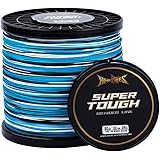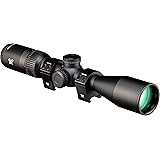The exhilarating action captured in the video above perfectly illustrates the unique challenges and immense satisfaction of urban ditch fishing. Far from the pristine rivers or open lakes, these often-overlooked city waterways can harbor surprisingly robust populations of aggressive fish, providing a thrilling angling experience for those willing to explore off the beaten path. This form of fishing isn’t just about sport; it often taps into a primal sense of “hood survival,” utilizing readily available resources and local knowledge to land impressive catches.
Navigating Urban Waterways: The Art of Ditch Fishing
Ditch fishing, or angling in urban canals, culverts, and drainage systems, presents a distinct set of parameters compared to traditional fishing environments. Anglers often encounter varied water quality, fluctuating depths, and a mix of native and invasive species thriving in these resilient ecosystems. Success hinges on keen observation, adaptable techniques, and an understanding of how fish utilize these constrained habitats. Furthermore, the close proximity to urban infrastructure can mean navigating unique obstacles, both above and below the water.
The “hood fish” mentioned in the video, referring to the fish in these urban environments, highlights their hardy nature. These fish are accustomed to angling pressure and often exhibit aggressive feeding behaviors, making for exciting battles once hooked. Understanding their typical holding patterns—often near submerged structures, culvert entrances, or shaded areas—is crucial for consistent success in these dynamic environments. Stealth and precise casting are paramount to avoid spooking the schools of fish often concentrated in specific zones.
Mastering Bait Presentation: The Power of Bread
As demonstrated in the video, bread can be an incredibly effective bait for various species inhabiting urban ditches. This readily accessible and inexpensive option mimics natural detritus or fallen insects, appealing to opportunistic feeders. However, simply tossing a piece of bread on a hook is rarely enough; strategic presentation is key to turning bites into solid hook-sets.
First, consider the bread type. Softer, less dense white bread often works best, allowing it to be easily molded around the hook and break down gradually to create a chumming effect. Alternatively, denser bread can be used to sink faster and reach deeper-holding fish. Anglers might employ several methods:
- Dough Balls: Compact pieces of bread squeezed firmly around the hook, offering a durable bait that slowly disperses scent.
- Floating Crust: A small piece of crust presented on the surface, mimicking a floating insect or bread thrown by passersby. This is particularly effective for surface feeders.
- Chumming: Tossing small, torn pieces of bread into the water before or during fishing can draw fish to your area, creating a feeding frenzy as seen in the video. This technique effectively concentrates fish, making them more competitive for your baited hook.
The goal is to make the bread irresistible, enticing the fish to commit fully rather than just nibble. Properly preparing the bread ensures it stays on the hook through casting and aggressive strikes, maximizing your chances of a successful catch.
The Monster Mike Hook Set: Precision and Power
The video frequently emphasizes the importance of a solid “Monster Mike hook set,” a crucial skill when dealing with aggressive, often hard-mouthed fish found in urban waterways. Many species, especially various cichlids and sunfish, have bony mouths that require a forceful and precise hook set to penetrate effectively. A weak hook set often results in lost fish, as the bait is stolen or the hook simply pulls free during the fight.
To execute an effective hook set, several factors come into play:
- Sharp Hooks: Always ensure your hooks are razor-sharp. A dull hook struggles to penetrate bone or cartilage, leading to missed opportunities.
- Line Tension: Maintain a relatively taut line. Excessive slack prevents direct energy transfer from your rod to the hook.
- Rod Position: Keep your rod tip pointed towards the bait. When a fish bites, sweep the rod sharply upwards and to the side, leveraging the rod’s backbone.
- Timing: Learn to differentiate between a tentative nibble and a committed strike. Waiting for the fish to fully take the bait before setting the hook increases your success rate.
Furthermore, selecting the appropriate hook size and style for your bait and target species is paramount. Wide-gap hooks, for instance, are often ideal for bread baits, ensuring enough gap to expose the point after the bread is compressed.
Species Identification and Management in Urban Fisheries
Urban ditch fishing often introduces anglers to a diverse array of fish species, some native, others invasive. The Mayan Cichlid, explicitly identified in the video, is a prime example of an invasive species commonly found in subtropical urban waterways. While not the “targeted species” for the anglers, its presence highlights the ecological shifts in these environments.
Identifying your catch is not just for curiosity; it’s critical for responsible angling. Many invasive species, like certain cichlids or tilapia, outcompete native fish for resources and can decimate local aquatic ecosystems. In many regions, there are regulations regarding invasive species, often encouraging or even requiring anglers to harvest them rather than release them back into the water.
The “blue one” fish caught later in the video, described as looking “like a parrot fish,” is likely another type of cichlid or perhaps a vibrantly colored sunfish. Such discoveries underscore the rich biodiversity that can exist in these seemingly unassuming urban ditches. Understanding the feeding habits and typical sizes of these various species helps anglers refine their techniques and equipment choices.
For sustainable urban angling, consider these points:
- Research Local Regulations: Understand catch limits, slot sizes, and species-specific rules for your area, especially concerning invasive species.
- Practice Catch and Release Appropriately: For native species, handle them with care and release quickly. For invasives, follow local guidelines, which often suggest removal.
- Observe and Learn: Pay attention to the fish you catch—their diet, their habitat preferences, and their behavior. This knowledge will enhance your future angling success.
Reading the Water: Locating Fish Schools
The phrase “follow the signs where the birds are at” offers a brilliant, real-world tip for locating fish in urban ditches. Birds, particularly wading birds like herons or diving birds like cormorants, are often astute indicators of fish presence. Their foraging activity suggests a concentration of baitfish or larger predatory species feeding beneath the surface. This instinctual observation is a hallmark of experienced anglers who connect environmental cues to fish behavior.
Beyond avian indicators, other signs can pinpoint fish schools in these complex environments:
- Surface Activity: Splashing, swirls, or baitfish jumping can all signal active feeding.
- Water Structure: Areas where current slows, where culverts empty, or around submerged debris (fallen branches, discarded tires) often provide cover and ambush points for fish.
- Shade: On sunny days, fish often seek refuge in shaded areas created by bridges, overgrown vegetation, or structures, providing cooler water and protection.
Effectively locating fish schools is arguably the most critical component of successful urban ditch fishing. It transforms a random casting exercise into a targeted, strategic endeavor, significantly increasing catch rates.
The Thrill of “Hood Survival” Angling
The term “hood survival” used throughout the video encapsulates the essence of urban ditch fishing. It’s about more than just catching fish; it’s about resourcefulness, resilience, and finding sustenance or sport in unexpected places. These fish, though often viewed with less prestige than their open-water counterparts, are tenacious fighters and, in many cases, provide excellent table fare. The satisfaction of harvesting a fresh meal from an urban waterway brings a unique sense of accomplishment.
Engaging in urban ditch fishing requires anglers to embrace the raw, unfiltered experience of angling in highly accessible, yet often overlooked, environments. It demands quick thinking, adaptability with bait and tackle, and a keen eye for subtle signs of fish activity. This approach to fishing strips away much of the commercialism and grandeur often associated with the sport, focusing instead on the fundamental joy of the catch and the practical skills of harvesting food.
Ultimately, urban ditch fishing offers an accessible, exciting, and often rewarding experience for anglers of all levels. It connects individuals with nature, even within the confines of a city, fostering an appreciation for aquatic life and the unexpected bounty these urban arteries can provide. The challenge of outsmarting these “hood fish” truly makes every successful hook set a testament to skill and perseverance.








